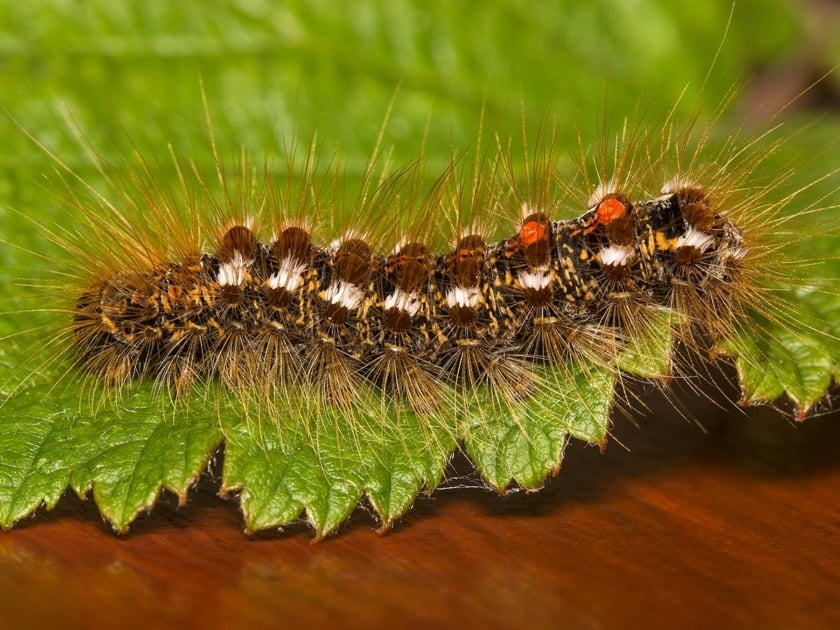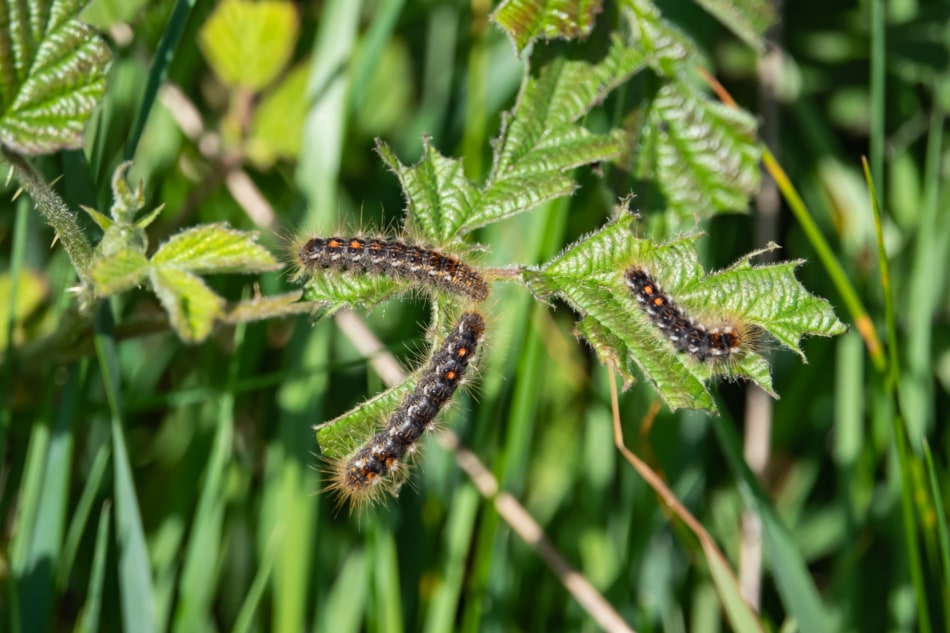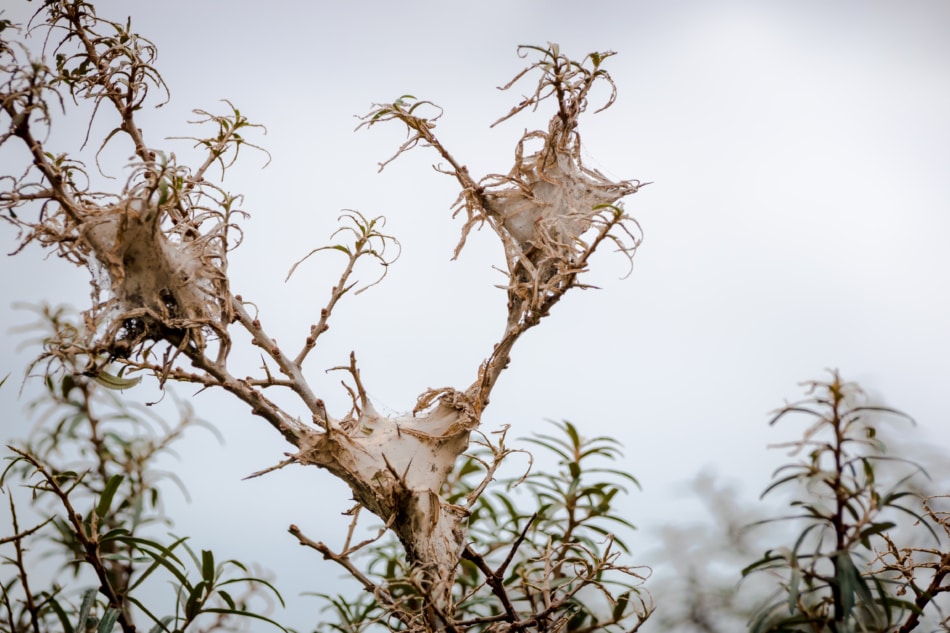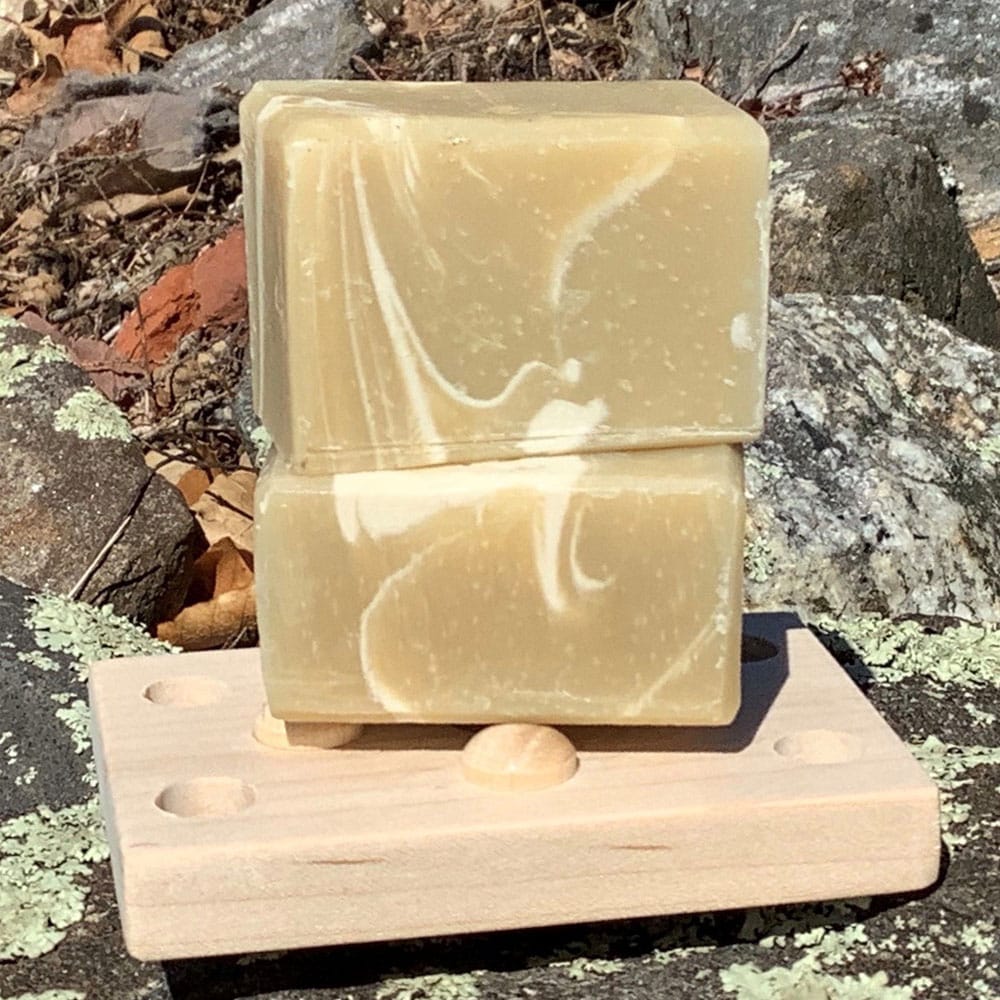How To Treat Browntail Moth Rash
You may already be familiar with threatening browntail moth caterpillars—especially if you live in the northeastern US. Found primarily on the coast of Maine and Cape Cod, the dangers of browntail moth caterpillars are two-fold: They cause skin rashes and also feed on trees to the point of killing them. Due to their seasonal resurgence, this bothersome creature is receiving lots of attention lately. As the weather warms and people begin heading outdoors, browntail moth caterpillars are also emerging from their webs in the trees. For information on when and where to spot them, how to treat a browntail moth rash, and how to prevent your plant life from being destroyed, keep reading.

Treating Browntail Moth Rash
If you happen to come in contact with the stinging hairs of a browntail moth caterpillar while walking in the woods, wash your clothes and take a cool shower as soon as possible. After a few hours, you may get a rash that is similar to poison ivy’s: itchy, blistered, and swollen skin. Most people experience a localized rash that lasts from a few hours to several days. Those with more sensitive skin can get a more severe rash, lasting up to several weeks. Take Benadryl or apply hydrocortisone cream to the affected area to relieve symptoms. Also, grab a bar of our Poison Ivy Soap, which works well for calming browntail moth rashes as well! Difficulty breathing is also possible after exposure and can lead to more serious problems, if hairs are inhaled. If you’re having trouble breathing, seek medical attention immediately.
When And How To Spot Them
The greatest risk for exposure to these tiny toxic caterpillars is between April and July when they are in their third larval stage. However their toxin can remain stable in the environment for one to three years and may become airborne if disturbed.
Browntail moth caterpillars have a dark brown body with a segmented white stripe running down each side and two noticeable red spots on their back. Younger caterpillars may lack the white stripes. Their bodes which grow to about 1.5 inches in length, are covered in toxic, barbed hairs.

Adult browntail moths have snow white wings, with a wingspan of approximately 1.5 inches and a tuft of dark-brown hair on the tips of their abdomen—hence their name. (This is in contrast to the yellow tip of the similar Yellow-tail moth.) The adult moths fly at night, during July and August, and are highly attracted to light, especially between the hours of 10pm-2am. It is important to note that adult browntail moths are not a danger as their hair is not toxic. But if you do happen to see them, there is a good chance that their caterpillars will be close by, so be on the look out and take precautions.
Browntail Moth Caterpillar Look-a-likes
Browntail moth caterpillars are commonly confused with their long brown-haired look-a-likes: the Eastern Tent and Gypsy Caterpillars. Here’s how to tell the difference: Browntail moth caterpillars have white tufts that run alongside their bodies, but Eastern Tent caterpillars have a white stripe that runs down the center of their back and have blue spots that resemble the “eye” in a peacock feather along each side of the stripe. The gypsy moth caterpillar has prominent knobs with hairs on each side and pairs of blue-and red-spots along its back. These two look-a-likes aren’t as harmful as the brown tailed moth caterpillar, but the gypsy moth is also known to cause skin irritation and damage to trees.
How To Minimize Exposure To Browntail Moth Caterpillars
The first line of prevention is staying away from heavily infested areas, but those are not always known. It helps to wear long sleeves and pants of tightly woven fabric to make it more difficult for the barbed hairs to get stuck in your clothes. Tucking pants into socks also helps.
If you live in an area where there is a large population of browntail moths, wear a mask while raking, mowing, or weed-whacking. This will help you avoid inhaling hairs that may get stirred up. Do yard work on damp days, when the moisture levels are high, to prevent the hairs from becoming airborne. Wipe down or rinse off lawn furniture before using. Avoid drying your laundry outside during the spring and summer months so that clothing, towels, and bedding don’t get covered in the hairs.
Pets or clothing may also transport these barbed hairs into the house. Give your pets a quick brush-off before they enter—especially after a walk in the woods (or rolling outside) in the months of June and July. Be sure to do the same for yourself! Before coming in from outside, swipe your clothes with duct tape or a lint roller to pick up any loose hairs. (Doing this may also pick up ticks that have clung on for a ride! See more helpful hints here.)
A Danger To Farms And Gardens
The Browntail moth is a health concern for farms, gardens, and forests as well. Browntail moth caterpillars overwinter in webs at the top of trees. In spring, as buds begin to pop open, these hungry caterpillars infest trees and feast on the foliage of hardwood and shrubs including: oak, apple, crab apple, cherry, rugosa rose, hawthorn, and beach plum. They have the capability of defoliating trees twice per season, causing considerable stress to trees. Voracious caterpillar feeding such as this may inhibit plant growth, lead to branch dieback, and even cause death.

DIY Browntail Moth Management
Prevention is key to curtailing widespread outbreaks. The best way to rid your garden or yard of browntail moths is to monitor and remove any visible moth nests. Winter webs are usually positioned on the ends of tree branches (as pictured above). They are made out of white silk that has been tightly wrapped around leaves and branches (as pictured below). Web clipping is advised between October and mid-April, before caterpillars emerge from winter webs and begin feeding on new leaves. Clip any webs that you can safely reach. Avoid clipping near hazards such as power lines. Leave the hard-to-reach ones for a professional. Once removed, dispose in the trash, burn, or soak in soapy water for an extended period. If you miss the window of web removal, insecticides labeled for controlling caterpillars are often effective if applied consistently before late May. Consider hiring a licensed pesticide applicator if needed.
Browntail Moth History
You may already be familiar with this threatening creature—especially if you live in the northeastern US. They were accidentally introduced to Massachusetts from Europe in 1897 and quickly spread. By 1913 this public health nuisance had swept across New England and as far north as Nova Scotia (and even south, into Long Island).
Have you ever seen the browntail moth or suffered from its rash?
Let us know in the comments below!
Our “Poison Ivy Soap” helps browntail moth rash too!

Poison ivy itch relief in a soap! An old Native American remedy for poison ivy calls for making a paste from the crushed leaves and stems of the jewelweed plant, also known as “touch-me-not.” Fortunately, you don’t need to hunt down jewelweed to get relief.

Natalie LaVolpe
Natalie LaVolpe is a freelance writer and former special education teacher. She is dedicated to healthy living through body and mind. She currently resides on Long Island, New York, with her husband, children, and dog.






This is a horrible rash and the fact that there are no warnings posted in places where there are obvious infestations like Lake Pemaquid Campground in Damariscotta, Maine is just plain wrong. This causes serious health problems! I am covered in welts and will have terrible scarring. I had to throw out my camping gear because the toxic hairs are likely all over everything and I had no idea this was even possible. Had there been a public posting I could have at least tried to protect myself and my dogs or reconsidered camping there. I feel like that’s extremely irresponsible of both the business, the town and the state. That campground has a serious infestation that they know about but but say it’s “wildlife” I have tried witch hazel, aloe, rose water, teenu spray, prescription strength (2%) hydrocortisone cream, Afterbite natural, colloidal oatmeal bath (Aveeno) and ice. Plus Benadryl around the clock and Ibuprofen. Nothing is working. I want to tear my skin off. You can’t get the hairs out of your skin bc they are so tiny and barbed, and they continue to release toxin. This caterpillar is a creature straight out of hell.
I didn’t realize the rash I had was a brown tail moth. I didn’t think I came in contact with one. Well, looking today around my door my place is covered in them! I was given prednisone and hydroxizine for this mysterious rash. It didn’t help. Out of desperation to stop this insane itching that seemed to spread when i scratched it, I reached for some tinactin cream and it cleared this rash up within three days i tried the hydrocortisone creams and the calamine lotion which did nothing. I hadn’t noticed these moths around my door, I thought maybe the cat came in contact with something or i’m allergic to her fur. NOPE! Those suckers are outside my door! Time to get rid of them. So try some tinactin cream or spray and see how it works for you.
Ouch! We’re sorry you had a run in! Glad you were able to heal up quickly.
I have had a severe case of brown tail that goes over every single extremity front and back for five years. I live under a huge oak tree so there is no way for me to escape it’s wrath. After trying different remedies and having it last for me about a month and a half in duration I can tell you what really works. Calamine and baking soda are a joke. My friend taught me at the first slightest itch to immediately use rubbing alcohol or hand sanitizer on it immediately. Keep putting it on the area over and over as soon as it starts itching. Bathing in the ocean brings such an insane amount of relief too. If it’s burning and nothing works run immediately to water for immediate relief. I also have a spray nearby made of witch hazel hydrocortisone lidocaine I shake it all up in a dollar tree water bottle to spray on me as needed. Lastly my new found best friend is the extra strength icy hot with double the menthol. I put that on as needed when nothing else works. I promise you if u follow my advice you will be ok.
Vaseline and Rose Water has worked wonders, first I cleaned with rosewater then applied Vaseline no itch at all, gonna try mixing with tape idea after i clean this off.
Packing tape works wonders without chemicals. Apply to the surface with light pressure then peal away. Quick, easy, instant relief.
Have it now. Been using topical triamcinolone (steroid) and Benadryl 50mg every 12 hrs for 4 days with no relief. Only relief is from an ice pack but pain and intense itching return as soom as I remove the ice pack. Fortunately, was masked at the time of exposure, so didn’t inhale any. Rash goes right up to the borders of the mask but spares the area that was covered by the mask.
Woe is me! Both arms. Couple of things I found out: the “prescription” your doc can send the pharmacy is nothing more than Benadryl plus cortisone plus lidocaine dissolved in witch hazel and shaken up. You can make this yourself. Consult your doc to verify proportions. Keep in fridge and discard after 1 month. Apply twice a day but no more than 3 times a day due to the steroid. Also, keep the affected area cool. Don’t take hot showers or bundle up to stay warm. If it’s on your arms as mine is, wear a vest rather than a sweater. We hired a boom truck to get rid of the webs early this spring before the larvae emerged, and they still got us!
Uggh! Good luck! Hope you feel better.
Last June my forearms were covered with the rash…I’m a gardener and am always outside…I layered several creams to fight the itchiness which helped…I stocked up ahead of time for this year..I’m in Central Maine and they’re rampant, unfortunately..
Yes we have had some of our staff get this rash too. Good luck. They are very abad in Maine this year.
? Thank you for the information. ?
Hi Angela,
Glad you found it useful and thanks for leaving a comment!
Yes had it last spring 2021 it was way worse than poison ivy. Its a itchy painful rash lasted two weeks! My ace is on Troy Maine…. I hope these caterpillars drop off like the gypsy months did..
Hi John,
A few of our colleagues at Farmers’ Almanac have also experienced the rash. Will keep your fingers crossed that they find a similar ending to the gypsy moth. Thanks for leaving a comment here.
I have never heard of Brown tail moth! Thanks for info.
Hi Sherry,
You’re welcome! Many of our colleagues here in Maine have unfortunately …in fact one of our team member’s vacation was cancelled because of them.